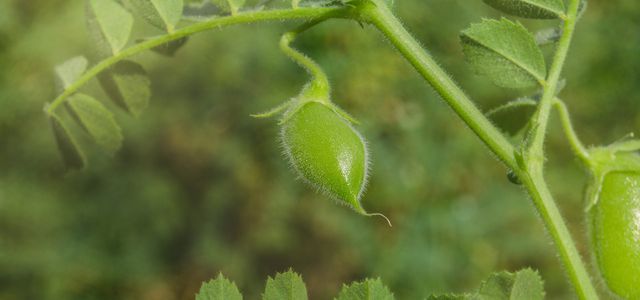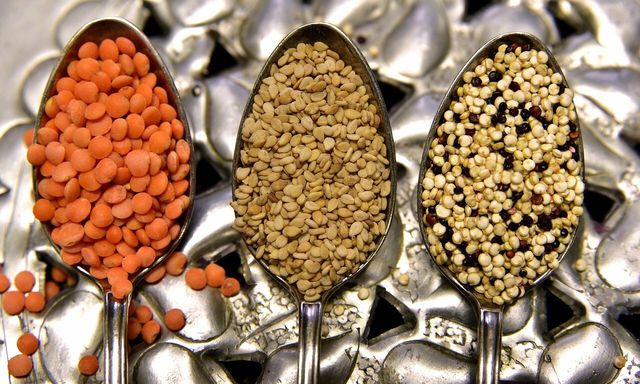
As a natural source of protein, lentils are currently celebrating a comeback in regional cuisine. In this article, we show you how to plant lentils in your own garden and what you need to bear in mind when growing and caring for them.
In the supermarket, the selection of legumes is now very large. Some of the vegetable protein suppliers such as lentils you can also plant yourself. In their wild form, lentils originally grew mainly in the Mediterranean region and the Near East. They can also be grown in Europe, especially in regions with poor soils such as the Swabian Alb.
Since lentils contain a lot of vegetable protein, they are a good alternative to meat in a vegetarian diet. Fresh from your own garden, the various types of lentils taste particularly good. So it’s well worth growing a few of the annual lentil plants in the bed.
Another advantage of growing lentils is that the plants are legumes and can form nitrogen in the soil thanks to the bacteria in their root nodules. As a result, they prepare the soil in the bed for subsequent crops like a natural green manure.
Contents
Planting lentils: These varieties are available

Lentils are one of the oldest cultivated plants in the world – so there is now a wide range of lentil varieties that you can plant. For example, you can choose between yellow lentils, green lentils or red lentils. Other well-known types are the plate lentils and the beluga lentils. The best thing to do is to go directly to the gardening store for advice on which species might thrive in your garden. Also, always prefer to buy organic seeds. Once you have decided on the right variety, you can start growing the lentil plants in the bed.
Grow lentils in your own garden: How it works

If you want to plant lentils in your own garden, you should follow a few tips beforehand. This will ensure that the cultivation is really successful and that the lentil plants grow quickly:
Location: It is best to choose a warm and sunny place in your garden for the lentils. Dryness and full sun are no problem for the undemanding legumes.
Soil: You can plant lentils even in places where other vegetable plants no longer thrive. As a weak grower, lentils grow best in calcareous soil. Garden soil that is too rich in nutrients, on the other hand, is less suitable for the legumes, as they are quickly attacked by fungi there.
Crop rotation and mixed cropping: You should always grow lentils in mixed cropping with cereals, as the plants often quickly fall over on their own. Well-suited mixed crops are, for example, oats or millet. They serve as a natural support for the lentil plants, which they can easily climb along.
Planting time: Lentil seeds can germinate at around four degrees Celsius. The ideal time to sow lentils is therefore in spring between the end of April and the beginning of May. You can then expect the harvest in mid- or late summer.
Grow lentils in the bed:
- First clear the future location for the lentil from weeds and loosen the soil well.
- Draw small planting grooves at intervals of about 20 centimeters.
- Now press the lentil seeds and the mixed-crop seeds about four centimeters deep into the soil. Keep a space of five centimeters between each seed as well.
- Finally, water the seeds lightly.
The right care for lentils
As an undemanding crop, the lentil requires little further care after sowing. You can therefore plant lentils even as a gardening beginner and in a low-maintenance garden. The following care tips can help you to get the richest possible lentil harvest in the summer:
- Watering: You can plant lentils even in very sunny and dry locations, as they cope well with drought. For this reason, you do not need to water them. The occasional rainwater is sufficient for the lentil plants as a source of liquid. When they form the pods of the lentils, you can support the plant with moderate watering.
- Fertilizing: Lentils form their own nitrogen and therefore do not need any other fertilizer. Incidentally, the lentil plants thus naturally contribute to soil improvement.
- Weeding: Lentils are relatively weak in competition and therefore run the risk of being overgrown by fast-growing weeds. Therefore, you should weed regularly in the bed so that the lentil plant has enough space.
- Harvesting: Depending on when you sowed the lentils, the first pods will be ripe from mid or late August. When harvesting, keep in mind that lentils ripen from the bottom up. This means that not all pods are ripe at the same time and you often have to re-harvest several times. You can recognize ripe lentils by the hard lentil seeds and the pods turning brown. Cut the lentil plant back to the ground after harvesting. Allow the pods to dry for a few days before wrapping them in a cloth and rubbing them to get at the lentil seeds. Thoroughly clean the grains in a sieve and free them from legume residues before you process them further.

